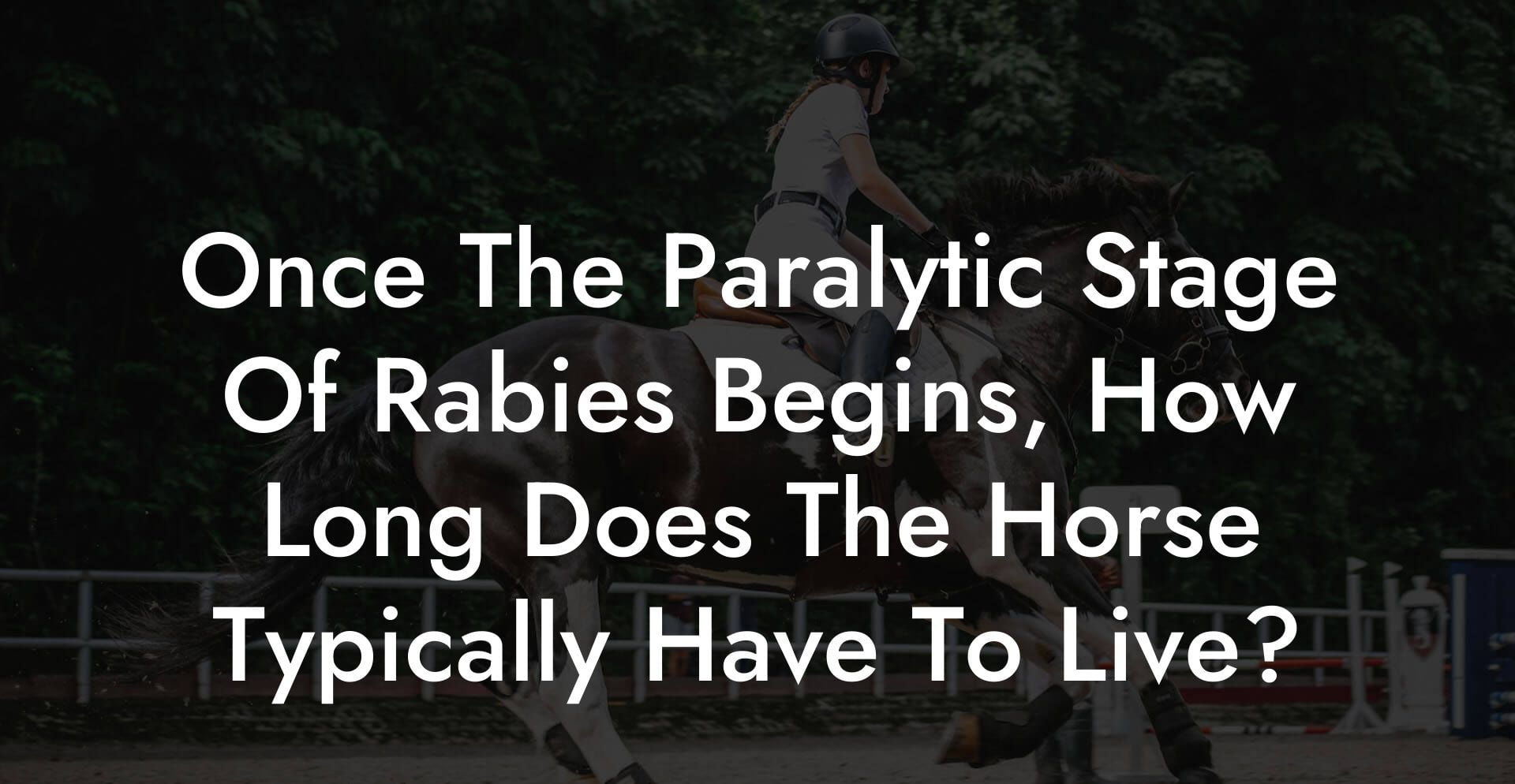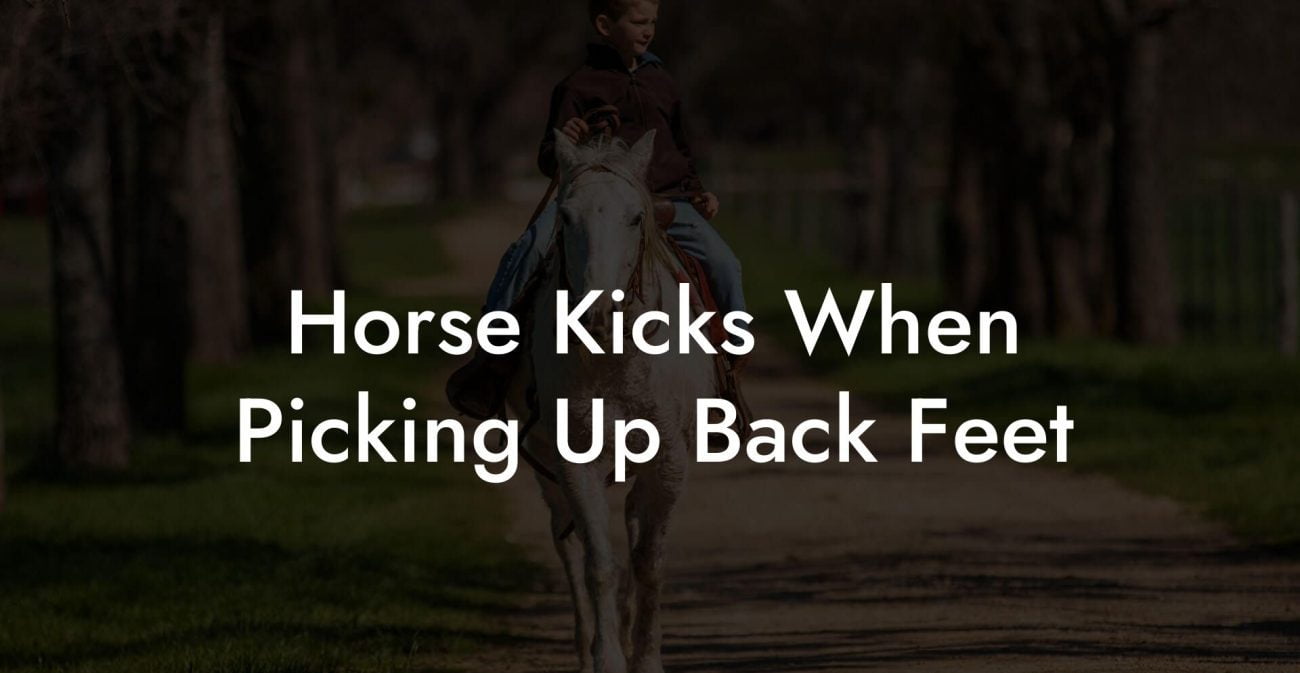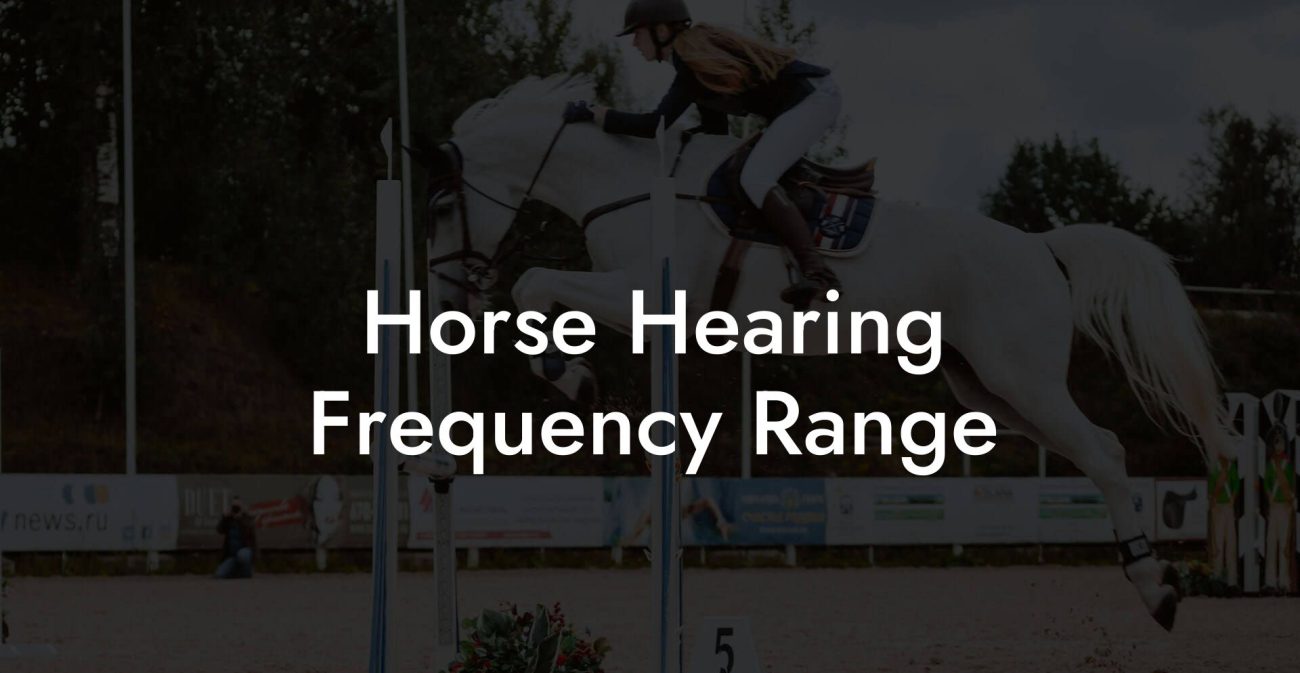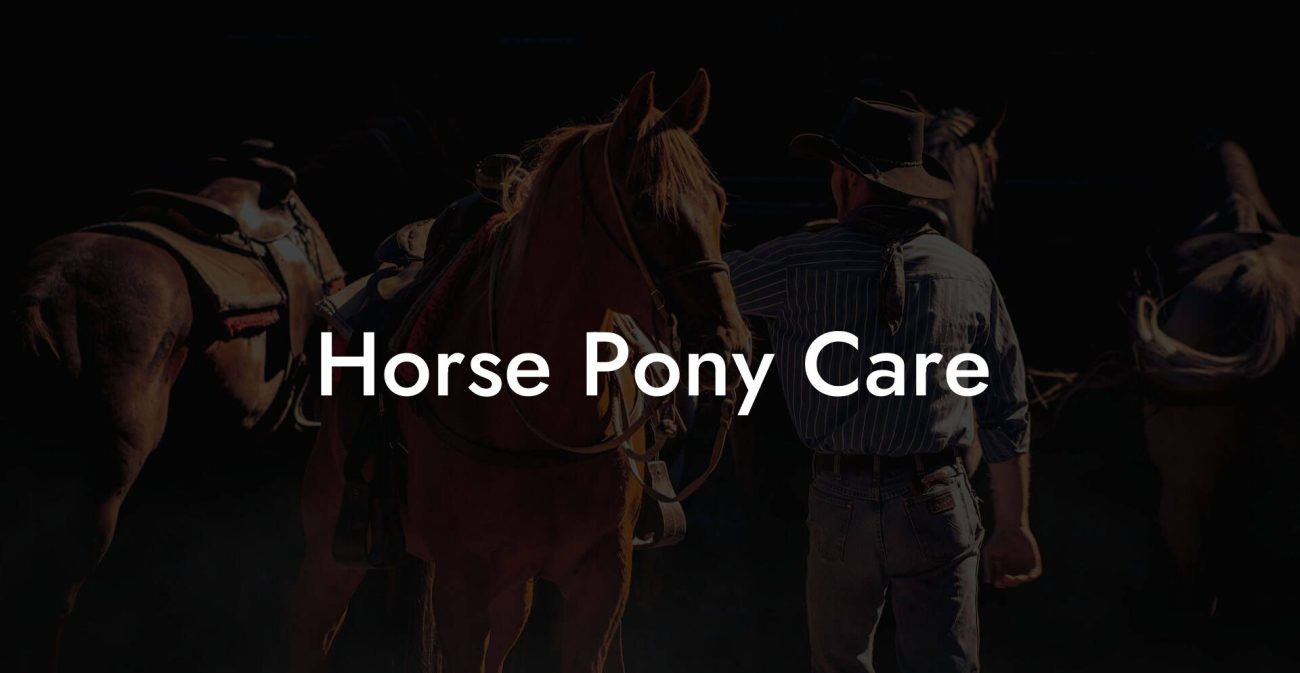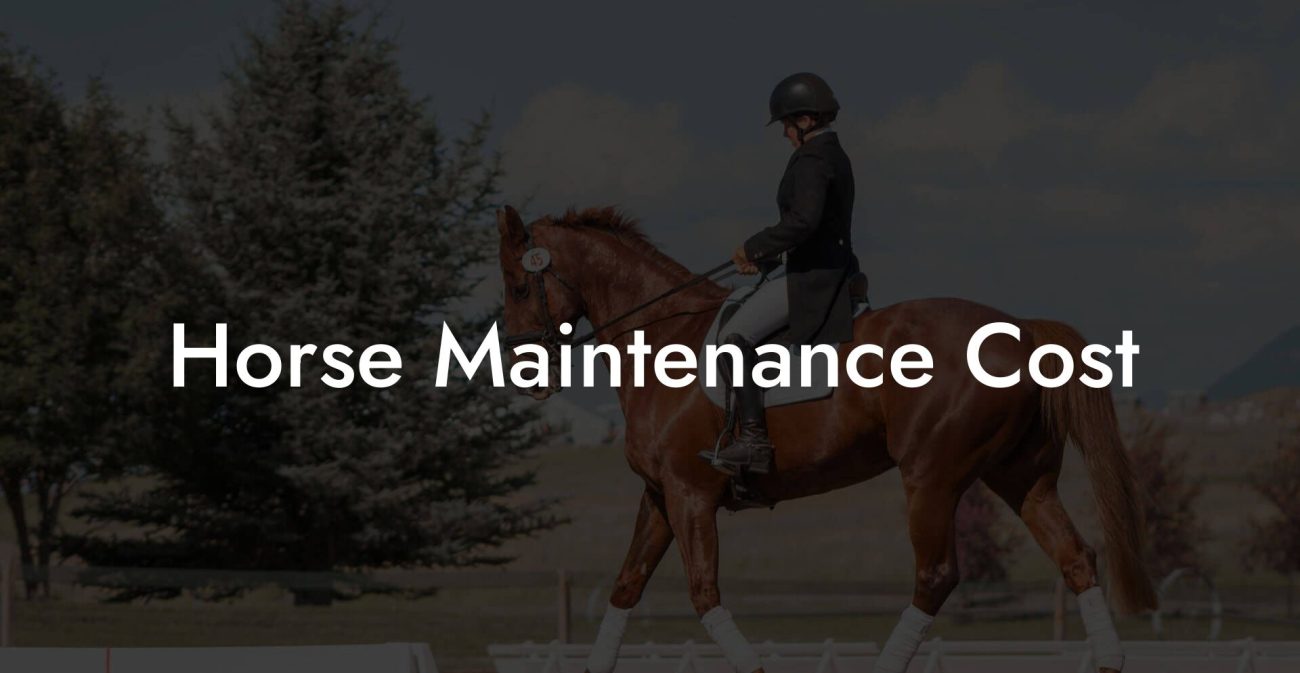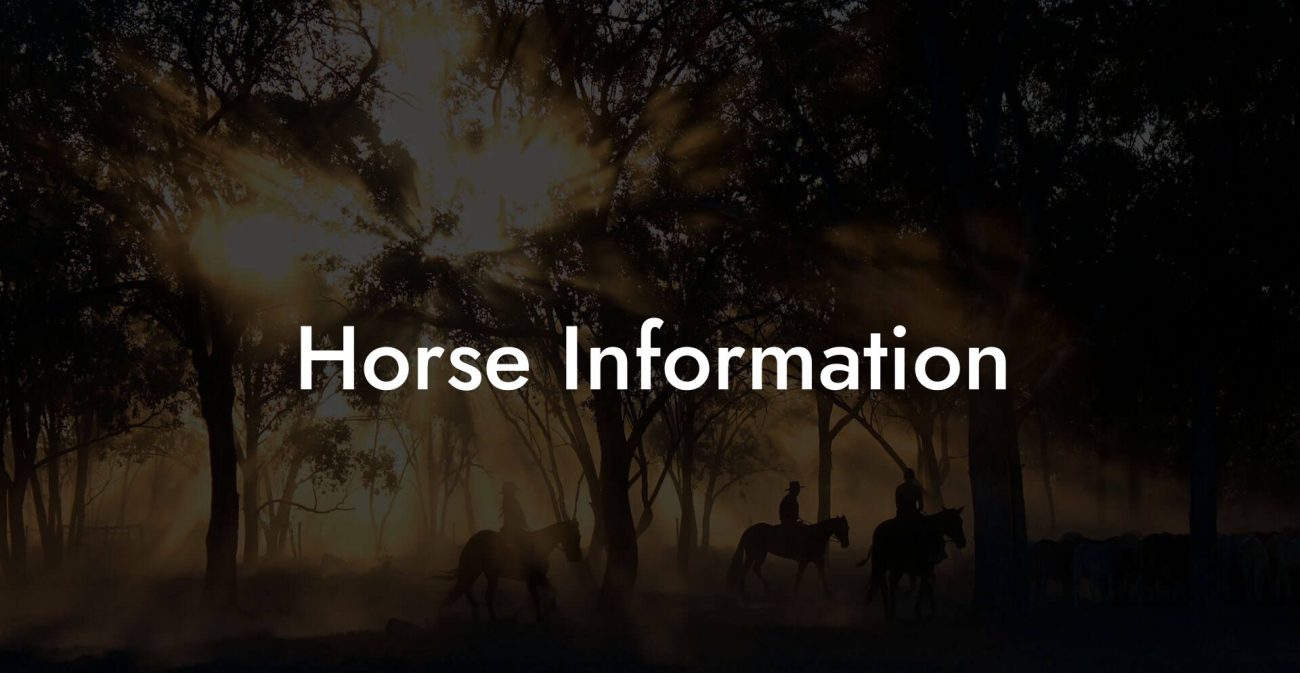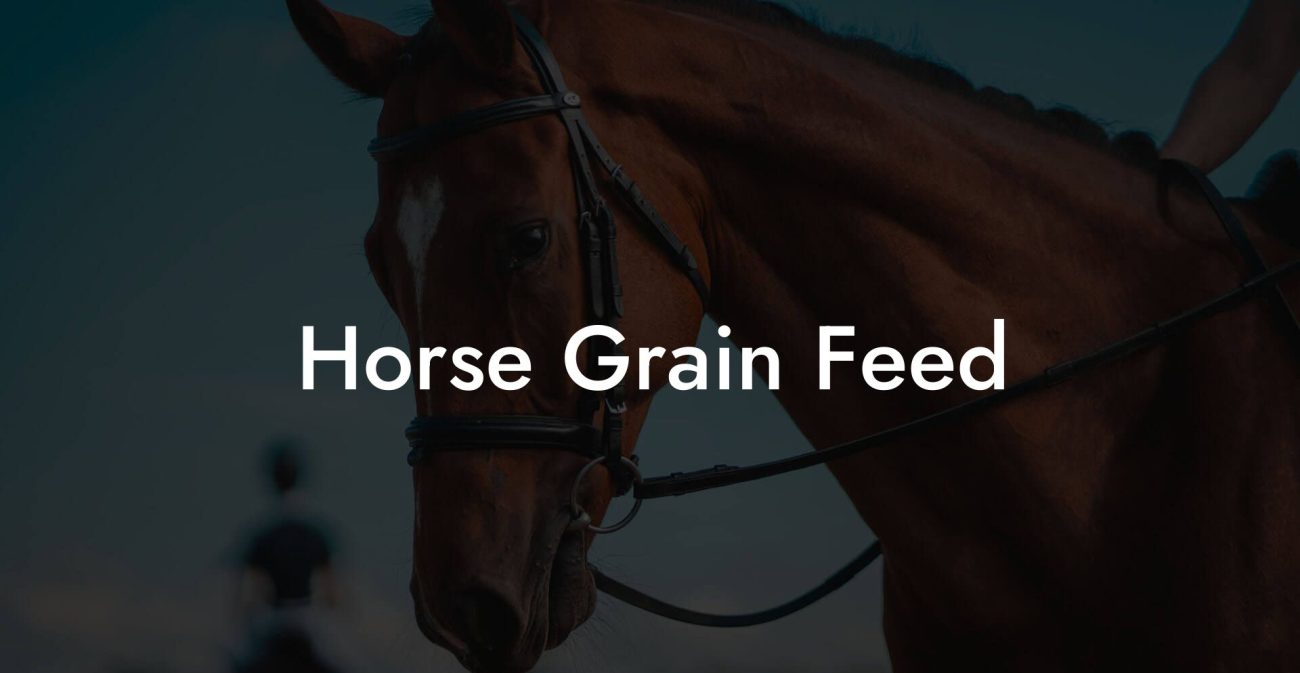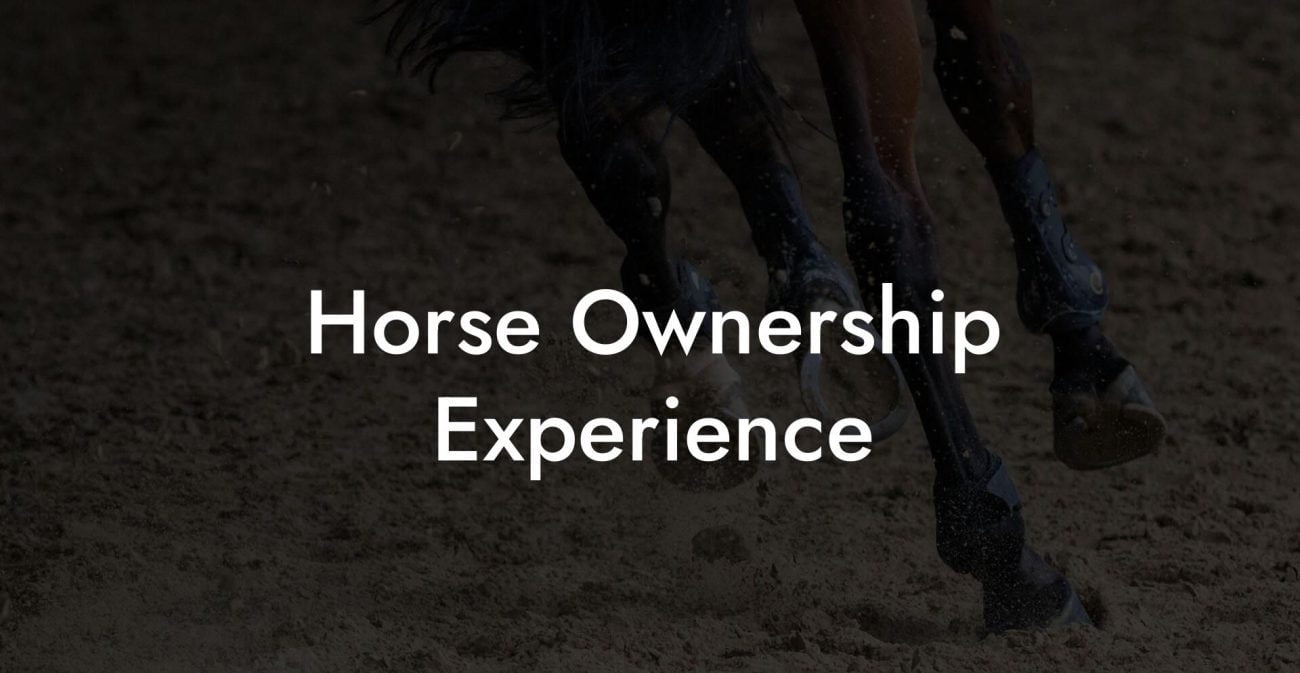Ever wondered how long a horse has left once it enters the paralytic stage of rabies? Buckle up, because we’re about to dive into one of the wildest, most challenging topics in equine care. Rabies in horses may sound like a plot twist from a thriller, but understanding the science, the timeline, and the ethical care options available is crucial for anyone passionate about our majestic four-legged friends. This guide is crafted just for you, yes, you Gen-Z and millennial equine enthusiasts who crave straight talk, actionable insights, and a dash of humor to lighten up an otherwise grim subject. So, saddle up and get ready to explore the intricate world of equine rabies, its paralytic stage, and the practical steps to take when faced with this heartbreaking scenario.
Quick Links to Useful Sections
- Understanding Rabies in Horses: A Quick Rundown
- Decoding the Disease: What Exactly Is Rabies?
- The Paralytic Stage: What Happens and Why It’s So Critical
- The Timeline: How Long Does a Horse Typically Live Once Paralysis Begins?
- Early Warning Signs: Recognizing Rabies in Horses Before It’s Too Late
- The Role of Veterinary Intervention: What Can Be Done?
- Prevention is Always Better Than Cure: Vaccination and Safety Tips
- Emotional and Ethical Aspects of Equine Rabies Care
- Resources and Community Support: Your Next Steps
- Scientific Insights and Future Directions in Equine Rabies Research
- Everyday Equine Care Beyond Rabies: Maintaining a Healthy and Happy Horse
- FAQ: Once The Paralytic Stage Of Rabies Begins, How Long Does The Horse Typically Have To Live?
- Your Path Forward: Knowledge, Compassion, and Proactive Care
Understanding Rabies in Horses: A Quick Rundown
Rabies is a viral disease that affects the central nervous system of mammals, and while we often associate it with those infamous snarling dogs in movies, horses are very much susceptible too. However, equine rabies is rarer compared to other species, thanks to widespread vaccination programs and proactive veterinary care. Still, when a case does arise, it throws every horse owner and caregiver into a whirlwind of confusion, grief, and tough decisions.
The virus is transmitted through the saliva of infected animals, primarily via bites or scratches. In horses, just as in other mammals, rabies unfolds in several stages, with the paralytic phase being one of the most critical, and fatal, stages. Once the virus reaches the brain, it’s a race against time and comfort measures, with little room for recovery.
In this comprehensive guide, we’ll break down the science behind rabies in horses, outline the key symptoms and stages, including the notorious paralytic phase, and provide tips on how to care for your equine buddy if the unthinkable happens. Whether you’re a seasoned horse owner or a newbie stepping into the realm of equine care, this deep-dive will equip you with all the essential details and practical advice.
Decoding the Disease: What Exactly Is Rabies?
Rabies is caused by a virus from the Lyssavirus genus, which, if allowed to progress unchecked, wreaks havoc on the nervous system. For horses, the journey of the virus begins with local replication after an exposure (usually a bite from a rabid animal), then slowly moves towards the brain via peripheral nerves.
While most horses that have been properly vaccinated never see the virus in action, unvaccinated horses or those with compromised immune systems might find themselves in the crosshairs of this deadly pathogen. The incubation period in horses can vary widely, from a few weeks to several months, depending on factors like the location of the bite and the viral load introduced.
Here are some key points to note:
- Transmission: Typically through bites, scratches, or exposure to infected saliva.
- Incubation Period: Can range from 2 weeks to several months; longer if the bite is far from the brain.
- Stages: Furious (hyperactive) and paralytic (dumb) phases are the main clinical presentations.
- Prognosis: Once clinical signs appear, the disease is almost always fatal.
The virus’s stealthy progress through the nervous system makes it one of veterinary medicine’s most feared adversaries. Understanding this process is fundamental, especially when you’re tasked with making decisions about the care and welfare of a horse in distress.
The Paralytic Stage: What Happens and Why It’s So Critical
When we talk about the paralytic stage of rabies, imagine the lights going out on your favorite rock concert, everything slows down, the energy fades, and there's a profound sense of loss for what once was. During this stage, the virus has advanced into the central nervous system, particularly affecting the motor neurons.
In horses, the paralytic form of rabies (sometimes referred to as the “dumb” form) presents with a more subtle, yet equally devastating, clinical picture compared to the “furious” type. While the furious stage involves dramatic behavioral changes like aggression and hyperactivity, the paralytic stage leads to a progressive loss of muscle control, culminating in complete paralysis.
Here’s a closer look at why this stage is particularly heartbreaking:
- Muscle Weakness: Initially, the horse might display weakness in a specific limb or area, which rapidly spreads.
- Drooping Eyelids and Facial Paralysis: These are early indicators that the virus has invaded critical nerve centers.
- Difficulty Swallowing: As the muscles controlling the throat begin to fail, the risk of choking and aspiration pneumonia increases.
- Incoordination and Loss of Balance: With progressive nerve damage, even standing becomes a monumental challenge.
Once these symptoms set in, the prognosis is grim because the virus has effectively taken control of the horse’s nervous system. Unlike other illnesses where treatment might slow progression or manage symptoms, rabies leaves little room for reversal. The paralytic stage can last anywhere from a few days to a couple of weeks, depending on various factors like the horse’s overall health, the speed of disease progression, and whether any supportive therapies are attempted.
Understanding these nuances is critical not only for veterinarians but also for horse owners who need to know when to seek immediate help or, in some cases, make the difficult decision to prioritize the horse’s comfort through euthanasia. The clock is ticking the moment the paralytic symptoms appear, and every minute counts.
The Timeline: How Long Does a Horse Typically Live Once Paralysis Begins?
Here’s the million-dollar question: Once the paralytic stage of rabies hits, how long does the horse have left? The honest answer is that there isn’t one-size-fits-all timeline, but we can paint a general picture based on clinical observations and veterinary research.
In most instances, horses in the paralytic stage of rabies have a very limited window, typically a matter of days to a couple of weeks, before the disease reaches a critical point. However, several factors can influence this timeline:
- Location of Viral Entry: If the bite or exposure site is closer to the head or central nervous system, the progression may be quicker.
- Overall Health and Immune Status: Horses with robust health might exhibit a slightly extended timeline, though eventually the virus outpaces natural defenses.
- Speed of Intervention: Quick detection and supportive care can sometimes modestly prolong the quality of life, even if they cannot reverse the course.
- Strain of the Virus: Variations in viral strains can influence disease progression, though most follow a similar rapid decline.
Unfortunately, once paralysis sets in, the focus often shifts from curative treatment to providing humane, palliative care. Veterinary options in this stage generally aim to alleviate pain and distress rather than attempting to cure the disease. This means that while some horses may linger for a few days longer under intensive care, the overall prognosis remains terminal.
It’s a stark reminder of nature’s brutal efficiency, and the importance of vaccination and early detection in equine populations. If you’re caring for a horse, keeping up with routine rabies vaccination is not just a recommendation; it’s an essential practice that can save lives.
Early Warning Signs: Recognizing Rabies in Horses Before It’s Too Late
While the paralytic stage marks the final act in the rabies saga, early signs can sometimes be subtle. Understanding these signs can help you get your horse the prompt veterinary attention it needs, and potentially prevent a case from ever reaching the paralytic phase.
Keep an eye out for the following symptoms:
- Behavioral Changes: Your normally chill horse might become unusually withdrawn or exhibit erratic behavior. In some cases, sudden aggression can surface in the furious form.
- Unexplained Fever: A spike in body temperature is a common initial sign of infection.
- Excessive Salivation: Uncharacteristic drooling or foaming at the mouth can be an early indicator.
- Swallowing Difficulties: Subtle issues with swallowing or chewing can hint at a developing neurological issue.
- Sensitivity to Touch: Increased irritability around the head or neck, especially when touched, should raise red flags.
Remember, these signs can also be manifestations of other illnesses, so consulting a veterinarian for a thorough diagnosis is key. Early detection not only improves the welfare of the horse but also reduces the risk of virus transmission to other animals or humans.
Vaccination remains your best defense against rabies. Many regions mandate rabies shots as part of routine equine health care, and staying on top of this can protect your horse from an otherwise fatal confrontation with the virus.
The Role of Veterinary Intervention: What Can Be Done?
As heartbreaking as it is, once a horse slips into the paralytic stage of rabies, the focus shifts from curative treatment to humane care. Veterinary professionals play a crucial role in managing the condition by providing supportive care that aims to keep the horse comfortable in its final days.
Here are the primary interventions you might encounter:
- Palliative Care: Intensive supportive care, including fluids, pain management, and nutritional support, is administered to ease discomfort. While these measures cannot cure the infection, they can ensure the horse remains as comfortable as possible.
- Isolation Protocols: Due to the highly infectious nature of rabies, strict quarantine protocols are enacted to protect other animals and humans. This means that the infected horse may be housed in a controlled environment under the constant watch of veterinary staff.
- Humane Euthanasia: In many cases, compassionate euthanasia is recommended once the paralytic stage has clearly set in. This is considered the most ethical course of action to prevent further suffering, especially when recovery is no longer a possibility.
- Diagnostic Testing: Confirming a rabies diagnosis involves laboratory tests such as direct fluorescent antibody (DFA) tests. These tests are essential to rule out other neurological conditions and to confirm that the appropriate protocols are followed.
It’s important to note that while supportive care can buy a little extra time, it is not a solution to the disease, it’s a compassionate response to an otherwise terminal diagnosis. The best defense against rabies is prevention, and for equine caregivers, that primarily means diligent vaccination and minimizing exposure to potential rabies carriers, such as wild animals.
Working closely with a knowledgeable veterinarian is non-negotiable. Their expertise not only ensures that your horse receives the best possible care but also safeguards the health of everyone involved by managing the strict biosecurity measures required in rabies cases.
Prevention is Always Better Than Cure: Vaccination and Safety Tips
While it’s a heavy topic to discuss, the bottom line for horse care is that prevention is always the best policy, and in the case of rabies, this maxim could not be more accurate. Vaccination is your frontline defense against this deadly disease. Most veterinarians recommend that horses receive a rabies vaccine annually, sometimes in combination with other routine vaccines.
Here are some must-know tips for keeping your horse safe:
- Timely Vaccinations: Ensure your horse’s vaccination schedule is up-to-date. Remember, the rabies vaccine is not just a formality, it’s a lifesaver, literally.
- Minimize Exposure: If you’re in an area where wildlife is common, be extra vigilant. Secure feed and water sources, and avoid letting your horse roam unsupervised in regions known to harbor rabid animals.
- Regular Check-Ups: Routine veterinary visits can catch early signs of illness, all the more important if you live in a high-risk area.
- Biosecurity Measures: Isolate any horses showing unusual behavior until a full veterinary assessment is completed. Early isolation might be the difference between prevention and a tragedy unfolding.
Incorporating these prevention practices into your daily equine care routine not only protects your horse but also gives you peace of mind knowing that you’re doing everything possible to thwart the onset of a deadly disease.
Staying informed, proactive, and engaged with the latest veterinary guidelines is key to ensuring the longevity and health of your horse, even in the unpredictable world of infectious diseases.
Emotional and Ethical Aspects of Equine Rabies Care
Let’s get real for a moment. Dealing with rabies in a horse isn’t just a medical crisis, it’s an emotional rollercoaster that challenges even the most seasoned caretakers. You’re not only managing a complex disease but also facing the reality of potential loss. For many horse lovers, these animals aren’t just livestock, they’re cherished companions, athletes, and even family members.
The ethical decisions involved in managing rabies cases can feel like navigating a minefield. For instance, while palliative care may prolong a horse’s life for a few extra days, it often comes bundled with significant pain and neurological decline. At some point, the conversation about humane euthanasia becomes unavoidable. It’s a heart-wrenching decision that requires balancing compassion, the animal’s quality of life, and public health considerations.
Here are some ways to handle the emotional and ethical side of the journey:
- Seek Professional Support: Veterinary professionals can provide guidance not only on the medical front but also on navigating the emotional toll of the situation. Don’t hesitate to ask for counseling or support groups for pet owners.
- Plan and Prepare: Advance directives can sometimes be arranged for your horse’s care. Discuss with your vet what to expect and how to handle the progression of symptoms, so you’re not caught off-guard when the time comes.
- Community Resources: Connect with local equine communities and online groups. Sharing your experience and hearing from others who have faced similar crises can provide both comfort and valuable insights.
- Document the Journey: For some, keeping a journal of their experiences helps to process grief and honor the cherished memories with their horse.
It’s important to recognize that there is no “perfect” way to handle such a heartbreaking situation. What matters most is that the approach is grounded in compassion, for your horse, for yourself, and for the broader community of animal lovers who understand the deep bond between caretaker and companion.
Resources and Community Support: Your Next Steps
Facing an advanced rabies diagnosis in your horse can feel isolating and overwhelming, but remember, you’re not alone in this journey. Numerous resources are available to provide guidance, support, and information tailored to both the medical and emotional challenges of equine care.
Here are some key resources and next steps you can take:
- Veterinary Associations: Reach out to professional organizations like the American Association of Equine Practitioners (AAEP) for updated information on rabies management and prevention in horses.
- Local Equine Communities: Join online forums, social media groups, or local equine clubs where fellow horse enthusiasts share experiences, advice, and emotional support during tough times.
- Animal Health Resources: Utilize resources from the Centers for Disease Control and Prevention (CDC) and the World Organisation for Animal Health (OIE) for accurate, science-based information on rabies.
- Equine Welfare Charities: Some organizations offer counseling and financial assistance for owners facing difficult decisions regarding end-of-life care for their horses.
- Expert Consultations: Don’t hesitate to seek a second opinion from a specialist in equine neurology or infectious diseases if you’re unsure about the best course of action for your horse.
By connecting with these resources and communities, you empower yourself with knowledge and emotional support, both of which are critical when making informed, compassionate decisions in the face of rabies.
Ultimately, your proactive engagement with educational resources and supportive networks will help ensure that every decision made in your horse’s care is as informed, compassionate, and ethically grounded as possible.
Scientific Insights and Future Directions in Equine Rabies Research
While current options for horses in the paralytic stage of rabies are limited to supportive care, ongoing research is constantly challenging the boundaries of what’s possible. Across the globe, scientists are exploring novel antiviral agents, improved vaccine formulations, and even gene therapy techniques to intercept the rabies virus before it’s too late.
These advancements aren’t just academic, they have real-world implications that may one day offer hope to equine caregivers and their animals. Keep an eye on emerging studies, and discuss any new findings with your veterinarian. Being informed about potential breakthroughs isn’t just empowering, it might one day revolutionize how we handle rabies in horses.
For instance, innovative research is delving into:
- Novel Antiviral Compounds: Experimental drugs aimed at slowing down viral replication in the nervous system.
- Enhanced Vaccination Protocols: Strategies that could extend immunity and provide a buffer even in cases of delayed exposure.
- Immunotherapy: Emerging techniques to stimulate the horse’s own immune system to target and neutralize the virus more effectively.
While these areas of study are still in their infancy and far from being a routine part of equine care, they signal that the future of rabies management might offer more proactive solutions than what is available today.
Staying updated on these scientific insights allows you not only to care for your horse in the present but also to participate in the conversation about future veterinary directions for equine health.
Everyday Equine Care Beyond Rabies: Maintaining a Healthy and Happy Horse
Let’s shift gears for a moment and talk about the wellness of your horse beyond the realm of rabies. While we’ve been deep-diving into one of the more daunting aspects of equine care, it’s essential to remember that there is an entire world of daily care routines, nutritional plans, and preventive measures that can help your horse lead a long, vibrant life.
Here are some core tips for ensuring overall equine wellness:
- Regular Health Check-ups: Schedule consistent veterinary exams to monitor your horse’s health and catch any issues before they escalate.
- Balanced nutrition: Ensure your horse’s diet is rich in high-quality forage, clean water, and supplements that support optimal health. A balanced diet is key to a robust immune system.
- Daily Exercise: Regular exercise keeps your horse physically fit and mentally stimulated. Whether it’s leisurely trail rides or structured training sessions, movement is medicine.
- Mental Stimulation: Horses are social, intelligent animals. Regular interaction with other horses, varied enrichment activities, and a change of environment help keep your horse’s mind sharp and stress levels low.
- Proper grooming: Maintaining a good grooming routine not only keeps your horse looking fabulous but also allows you to check for injuries, parasites, or skin issues early on.
These everyday practices not only help prevent disease but also enhance the bond between you and your horse, an essential element of equine care that transcends the challenges of any single disease.
Remember, the more connected you are with your horse, the better you’ll be able to notice subtle changes in behavior or health. This attentiveness is your first line of defense against any future issues, rabies-related or otherwise.
FAQ: Once The Paralytic Stage Of Rabies Begins, How Long Does The Horse Typically Have To Live?
Below are some frequently asked questions that tackle the complexities of rabies in horses, designed to help you navigate the critical moments of this heart-wrenching diagnosis.
1. What exactly happens during the paralytic stage of rabies in horses?
During the paralytic stage, the rabies virus has invaded the central nervous system, leading to progressive muscle weakness, loss of motor control, and eventually paralysis. The clinical signs include drooping eyelids, difficulty swallowing, and incoordination. Unfortunately, this phase is almost always terminal.
2. How long does a horse typically live once paralysis begins?
Most horses in the paralytic stage have a very limited lifespan, typically ranging from a few days to about two weeks. The exact timeline depends on factors such as the location of the initial exposure, the horse’s overall health, and the virus strain.
3. Can any treatment actually reverse the paralytic stage of rabies?
There is no cure once the paralytic stage is reached. Veterinary care focuses on palliative treatment to alleviate pain and distress. Humane euthanasia is often recommended to prevent further suffering.
4. How is rabies in horses prevented?
Routine vaccination is the cornerstone of rabies prevention in horses. Keeping up-to-date with vaccinations and minimizing exposure to wild animals are the most effective ways to protect your horse.
5. What are the early signs of rabies in horses?
Early indicators can include behavioral changes, unexplained fever, excessive salivation, difficulty swallowing, and sensitivity to touch. If these signs are observed, seek veterinary advice immediately.
6. Is there any hope for recovery if rabies is detected early?
Once clinical signs appear, rabies is almost always fatal. Early vaccination and preventive measures are essential because treatment options after symptom onset are extremely limited.
7. How can I protect other animals and myself from a rabid horse?
Isolation of the affected horse, strict biosecurity protocols, and notifying local animal health authorities are critical steps. Always wear protective gear and follow your veterinarian’s guidance if rabies is suspected.
8. What research is being done to improve outcomes for animals with rabies?
Ongoing research is focused on novel antiviral therapies, enhanced vaccination protocols, and immunotherapy strategies. While these innovations are promising, they are not yet standard practice in equine care.
Your Path Forward: Knowledge, Compassion, and Proactive Care
Delving into the complexities of rabies, particularly the paralytic stage, is no easy task. It challenges our understanding of biology, veterinary medicine, and, most poignantly, our emotional resilience as caretakers. While the timeline for a horse once paralysis sets in is tragically brief, the lessons learned along the way, about prevention, early detection, and compassionate care, are invaluable.
The world of equine care is as dynamic as it is challenging. For every crisis like rabies, there are countless instances of successful prevention, deep bonds between horses and their caregivers, and innovative research promising better futures. Your role is essential: staying informed, being proactive with vaccinations, and building a network of support are the keys to nurturing a healthy, happy horse.
Remember, every interaction, every routine check-up, every attentive observation is a step toward a safer, more conscious world of equine care. Let your passion for these magnificent animals drive you to advocate for better vaccination coverage, support ongoing research, and foster communities of care and compassion. Whether you’re confronted with a challenging diagnosis or simply planning preventative measures, you hold the power to make informed, ethical decisions that honor the life and dignity of your horse.
So, take this knowledge, mix it with your love for equines, and ride forward with confidence. In the unpredictable world of horse care, being prepared and informed makes all the difference. Your journey continues, armed with insight, empathy, and the ever-important drive to maintain the health and happiness of your cherished horse.

